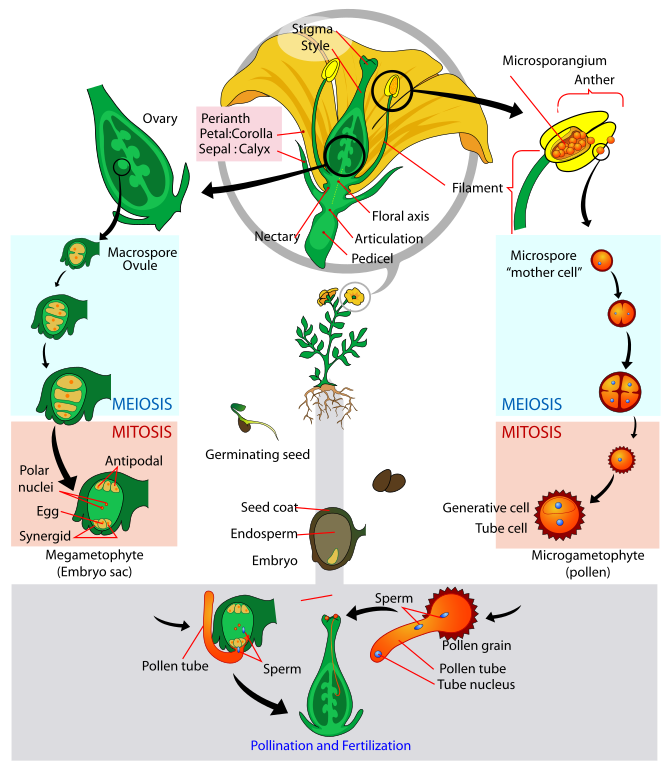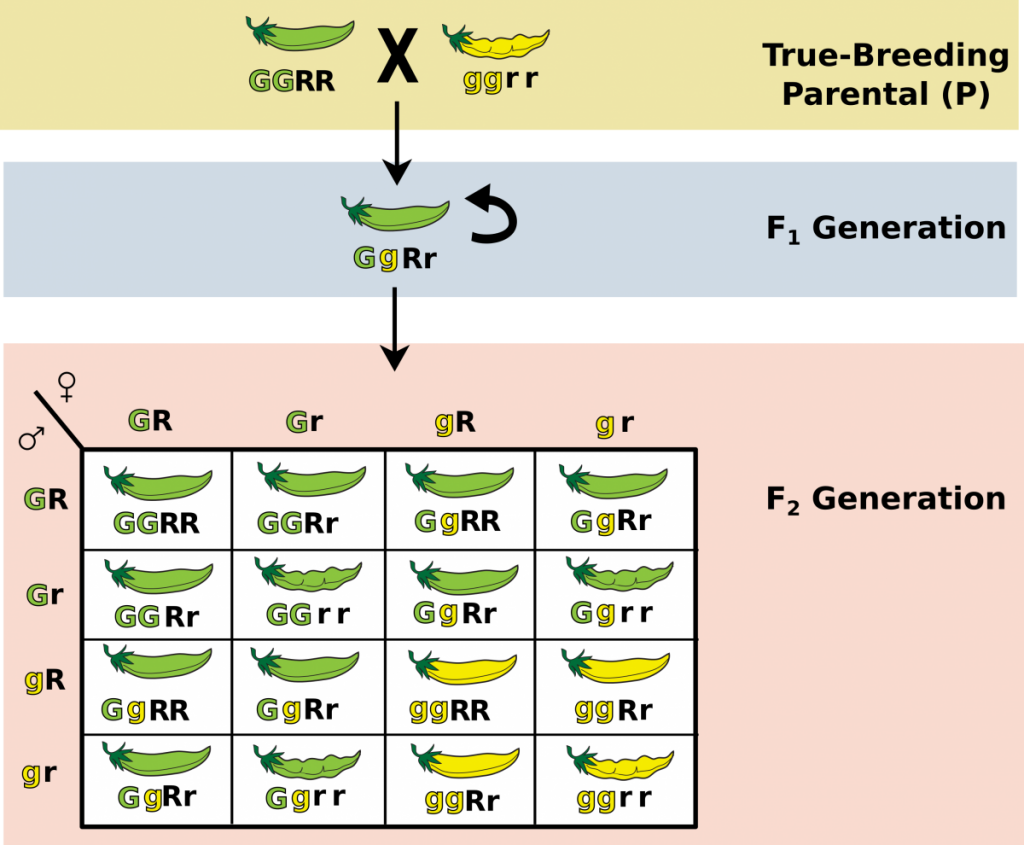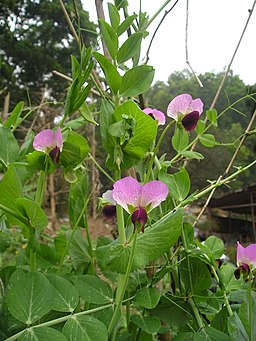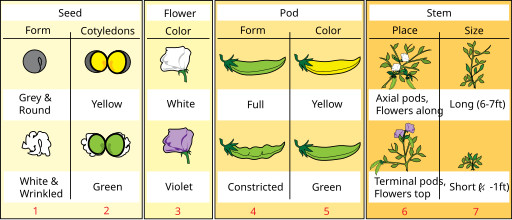- Describe the general aspects of Mendel’s experimental method, and explain why his work is considered so important.
- Define the following terms: gene, F1 generation, F2 generation, P generation, dominant, recessive, allele, homozygous, heterozygous, phenotype, and genotype.
- Explain the principle of segregation and the principle of independent assortment.
- Discuss the value of a testcross.
- Calculate expected phenotypic and genotypic ratios from various monohybrid and dihybrid crosses using the Punnett square method.
- Describe the molecular mechanism for independent assortment
- Describe the role of monohybrid versus dihybrid crosses in revealing Mendel’s laws
Contents [hide]
Variation
Writing the Rules of Heredity
 In the mid 1800’s, an Augustinian friar named Gregor Mendel formalized quantitative observations on heredity in the the pea plant. He undertook hybridization experiments that utilized purebred or true breeding plants with specific qualities over many generations to observe the passage of these traits. Some of these physical traits included: seed shape, flower color, plant height and pod shape.
In the mid 1800’s, an Augustinian friar named Gregor Mendel formalized quantitative observations on heredity in the the pea plant. He undertook hybridization experiments that utilized purebred or true breeding plants with specific qualities over many generations to observe the passage of these traits. Some of these physical traits included: seed shape, flower color, plant height and pod shape.
The pea plant (Pisum sativum) offered a great advantage of being able to control the fertilization process and having large quantities of offspring in a short period of time. In a simple experiment of tracking the passage of a single trait (monohybrid cross) like flower color through multiple generations he was able to formulate rules of heredity. In this case, pea plants either produced white flowers or purple flowers for many generations (true breeding purple flower or true breeding white flower). These true breeding plants are referred to as the Parental Generation (P). By removing the male parts of the pea flower (anthers containing pollen), Mendel was able to control for self-pollination. The hybridization came from applying the pollen from one true breeding plant to the female part (the pistil) of the opposite true breeding plant. The subsequent offspring are referred to as the First Filial Generation (F1). In the first generation, all flowers are purple. Permitting self-pollination generates a Second Filial Generation (F2). This generation sees the re-emergence of the white flowered plants in an approximate ratio of 3 purple flowered to 1 white flowered plants.

Male and female parts of flowers. Mendel removed the anthers containing pollen to prohibit self-pollination and selectively applied the pollen to stigmas in order to control the “hybridization”.
The loss of one variant on the trait in the F1 plants with the re-emergence in the F2 prompted Mendel to propose that each individual contained 2 hereditary particles where each offspring would inherit 1 of these particles from each parent. Furthermore, the loss of one of the variants in the F1 was explained by one variant masking the other, as he explained as being dominant. The re-emergence of the masked variation , or recessive trait in the next generation was due to the both particles being of the masked variety. We now refer to these hereditary particles as genes and the variants of the traits as alleles.
Mendel’s Rules of Segregation and Dominance
The observations and conclusions that Mendel made from the monohybrid cross identified that inheritance of a single trait could be described as passage of genes (particles) from parents to offspring. Each individual normally contained two particles and these particles would separate during production of gametes. During sexual reproduction, each parent would contribute one of these particles to reconstitute offspring with 2 particles. In the modern language, we refer to the genetic make-up of the two “particles” (in this case, alleles) as the genotype and the physical manifestation of the traits as the phenotype. Therefore, Mendel’s first rues of inheritance are as follows:
- Law of Segregation
- During gamete formation, the alleles for each gene segregate from each other so that each gamete carries only one allele for each gene
- Law of Dominance
- An organism with at least one dominant allele will have the phenotype of the dominant allele.
- The recessive phenotype will only appear when the genotype contains 2 recessive alleles. This is referred to as homozygous recessive
- The dominant phenotype will occur when the genotype contains either 2 dominant alleles (homozygous dominant) or on dominant and one recessive (heterozygous)
The Single Trait Cross (Monohybrid Cross)
The Two Trait Cross (Dihybrid Cross)
Mendel continued his experimentation where he looked at two traits. These two trait crosses are called dihybrid crosses. While the monohybrid cross would yield 3:1 ratios of the phenotypes, the dihybrid crosses would yield 9:3:3:1 ratios of all the combinations of each phenotype.
Mendel’s Rule of Independent Assortment
The dihybrid cross revealed another law of inheritance to Mendel. By observing the 9:3:3:1 ratio, Mendel concluded that traits were not tied to each other. That is to say, if a pea pod was yellow, it could still be either smooth or wrinkled in texture. This lack of linkage between genes yielding different characteristics was dubbed the Law of Independent Assortment. Genes for different traits can segregate independently during the formation of gametes.








